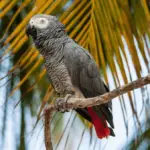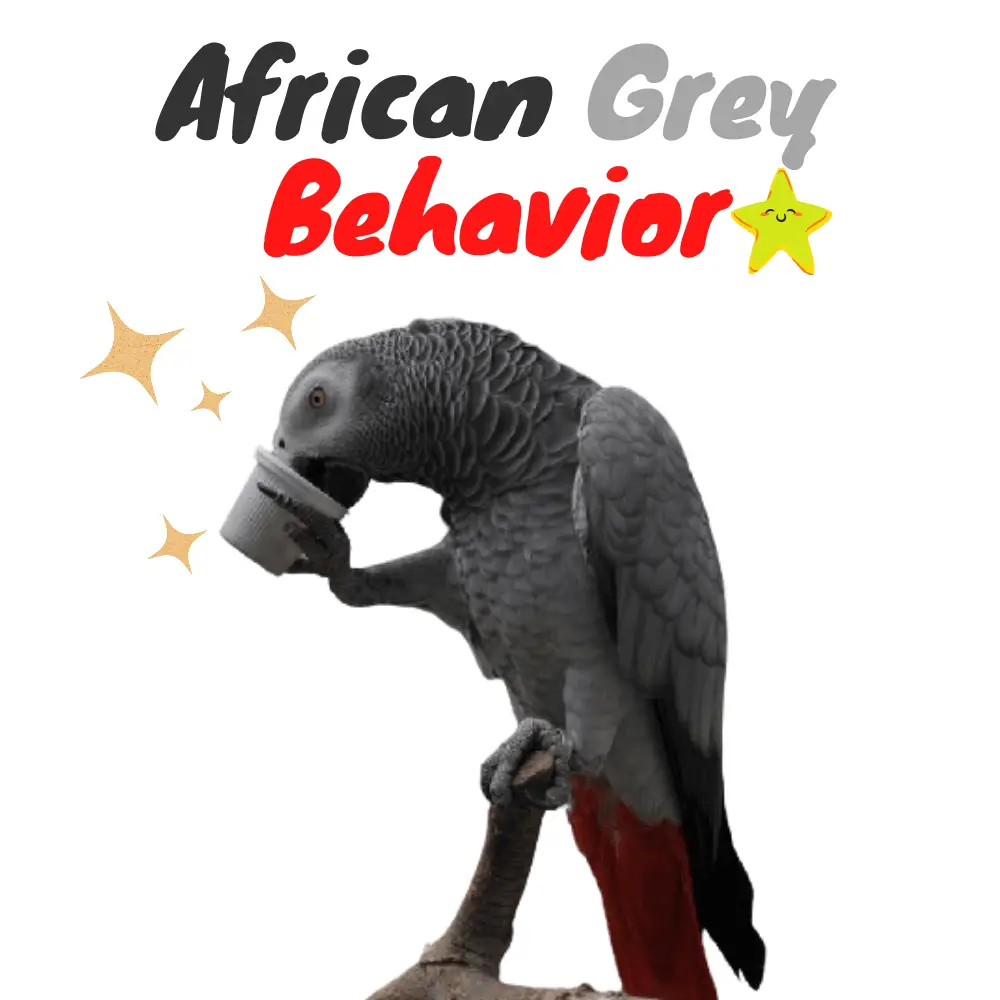African Grey Behavior: Commonly known as Congo African Grey, African Parrot, or Grey Parrot, African Grey Parrot. About 36 cm long, 450 to 600 grams. Plumage gray ash, bright red tail. Equatorial Africa.
Psittacus Erithacus Princeps: Also called Ghanaian gray, West African gray, or Boyd Alexander. It looks a lot like Congo, but a little smaller. Principé Island and Fernando Po in the Gulf of Guinea.
Timneh Parrot
Psittacus erithacus Timneh parrot: Gray African Timneh parrot. 23 cm long, 250 to 350 grams. Dark charcoal gray plumage, red-brown tail. The upper mandible of a pinkish beak. Much smaller than Congo or Ghana. Sierra Leone, Liberia, Guinea, and western Côte d’Ivoire. Temperament is less scowling than in the Congo or Ghana. Less fearful and more rebellious. More inclined to do something stupid to attract attention and have fun.
African grey behavior meanings
Behavior and character of the African grey n This bird needs to feel safe in the environment in which it evolves. … When frightened, the Gabon gray emits an impressive growl. He may favor the person he prefers to the point of excluding all other family members.

African Grey Characteristics
- Immature birds (less than a year old) have the iris of the dark gray, almost black eye. After a year, the iris fades and turns pale gray, then takes on its final color. A mature bird has pale yellow iris or corn.
- This bird produces a fine powder to maintain its plumage. A well-powdered bird is a sign of good health. The absence of this powder may indicate a physiological problem.
- African gray is surely one of the most gregarious species in the world of parrots. In the wild, it lives in flocks of 100 to 200 (and sometimes more) individuals and remains in groups even during the breeding season.
- It lives in the tropical forest under the canopy between 15 and 25 meters from the ground. He is a very good climber. When it comes to feeding and drinking on the ground, it does so in a group.
- In the wild, his diet is rich in vegetable fats protein, and vitamin A. He is fond of palm nuts (very rich in fat and vitamin A), coffee beans, and palm fruit (Elaeis Sinensis). His digestive system is perfectly suited to this kind of diet.
- Because of the density of the rainforest, the gray must fly above the trees, sometimes up to an altitude of 700 meters.
One of the highest captive parrots and one of the most popular with amateurs, mainly because of his calm temper, his intelligence, his remarkable ability to reproduce sounds perfectly, the human voice, and above all … to speak to communicate. - This bird is also appreciated for its great sensitivity and its incredible empathy with its humans. He feels our deepest emotions, moods, moods, energies, and these are reflected in his behavior.
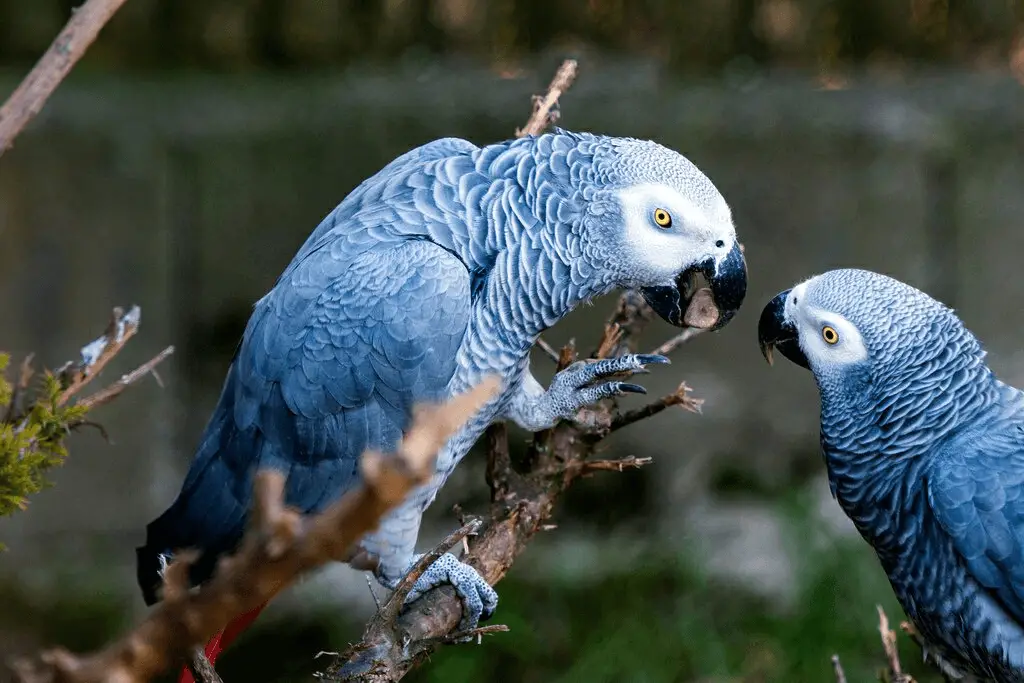
African grey behavior meanings
African gray is more thoughtful, suspicious, and therefore more fearful than other parrot species. He seems to classify any human or object around him in two categories:
1) Dangerous.
2) Possibly dangerous.
3) Normal and safe.
- Without strong socialization, all that is not familiar to the bird automatically refers to the first category. This suspicion is practically chronic in the African gray. He is afraid of new things and this, in all facets of his life (humans, food, toys, objects, etc …).
- But do not be discouraged, after a while, curiosity overcomes his apprehensions. It is important not to force it, it will take the time it takes. Gray can only accept novelty very slowly … drop by drop.
- Contrary to popular belief, the African gray is a very affectionate bird. It is in early childhood, when the African gray is still very naive, sticky, and unsuspecting, that it must be manipulated and made to live safe adventures.
- After this stage, gray become much more selective about what it is willing to accept from humans. Lack of socialization in early childhood is the most common cause of behavioral disorders in an adult parrot.
- African Grey Parrot Behavior is wary of nature.
The more intelligent an animal is, the more likely it is to develop behavioral problems and the gray is excessively intelligent! In the ranking of pecking (mutilation or extraction of feathers), it is tied with the cockatoo, also recognized for its excesses.
- Due in large part to his sensitive nature and great intelligence, the African gray can react very negatively to the clumsiness of an educator as well as during the training process. You should never force a gray to do what he does not want, he could even develop phobic behaviors.
- Therefore, it is important to teach him soon enough that biting is not a way to communicate. Grays only respond well to positive reinforcement. Educating a gray should be more like educating a child than a pet.
- The African grey can in no case trust or respect someone who has violent and aggressive reactions, both in voice and in gestures.
- Gray makes an awful growl when he’s scared.
It is a bird that only feels good if it feels safe and that it understands its environment well. We must always advise the gray of our intentions before handling or caressing it. - This will make him more receptive. You must never surprise an African gray.
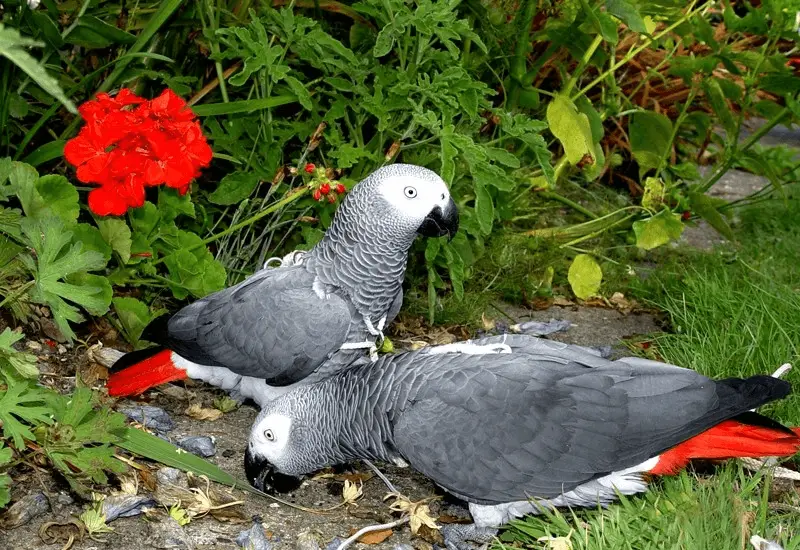
- Gray is a very gregarious parrot and it needs to feel accepted and to be a full member of its social group (human family). For his balance, both psychic and physiological, he needs a companion of his kind. It’s not a whim … it’s a need.
He weaves a very strong bond with his romantic partner (bird or human) and is totally devoted to him. He can also become possessive with the latter and aggressive with those around him. He can favor his favorite human to the point of excluding all other members of the family. Again, good socialization can help prevent this kind of situation.
By its distrustful, shy, and anxious nature, it is not a very sociable bird towards foreigners. He will be rather distant, will not be tolerant, except in some cases, with children.
- Gray, more than other parrots, needs a calm, safe and peaceful environment. Which does not mean that it is a “cushy” bird … far from it. He can even be very dispassionate and curious. He just doesn’t like extravagance, exuberance, and turbulence (from others).
- African gray needs a lot of stimulation in its environment. It is a very curious bird that loves to learn and go to discover … However, it quickly gets tired of an activity. His ever-alert mind will then eagerly seek other stimuli. Up to you…
African gray is the parrot that, strangely for a bird with such a penchant for neurosis, has the most stable temperament in the world of Psittacidae. As much as he can prove to be quite turbulent when he is young, at maturity he is calm and thoughtful. Unlike other parrots, gray does not have this inclination to (so much) change in personality or behavior during the breeding season, which is, in my opinion, a very big point in its favor.
- African gray is rightly considered the champion of all categories in the avian world. It is capable of remarkably reproducing a multitude of sounds, including the human voice.
- In contrast, gray begins to speak later than other parrots, around the age of 12 to 18 months. He needs to practice sounds and develop his muscles to properly control the formation of sounds.
- Unfortunately, breeders or resellers tend to insist only on THIS talent for mimicry to sell this bird and this is what makes it so desirable for the buyer. Few people insist on the needs of this so intelligent bird, nor on its particular behaviors.
- Gregarious African Gray
African gray has no cry as defined by its species (apart from grunts). So it’s not a showy bird. On the other hand, it can drive the most zen of humans crazy by continuously imitating the ringing of the microwave, the smoke detector, or, by performing its famous imitation of the truck backing up!
- On the other hand, because of his almost schizoid suspicion, the problem with gray talking is that he systematically refuses to perform, (even when asked politely), in the presence of strangers (not immediate family). He has the gift of taking refuge in mutism to make you pass for the greatest of the mythomaniacs!
- As the gray is a wary and rather timid bird, it would be good to provide for his places in height where he will feel more easily safe; trees, ropes, and lianas as well as perches hanging from the ceiling. These will be his favorite places to be comfortable in order to give his best vocal performances (speaking, singing).
- Naturally, for the bird to have access to these heights, it is essential that it can fly. We don’t cut the flight feathers of an African gray! Like all stocky parrots (large body, small tail), it needs its feathers to maintain its balance. In addition, as the first reflex of a scared bird is to fly away, more than other parrots, the gray needs all its flight feathers. Too many accidents happen to grays with trimmed flight feathers (broken beak, broken or open breastbone, etc.).
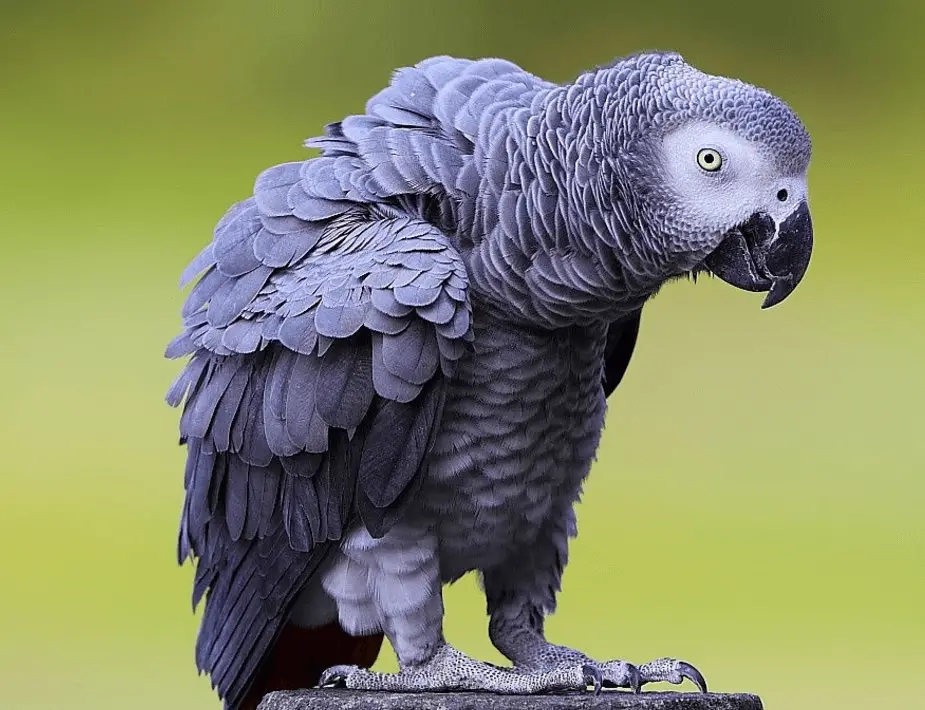
African Grey Parrot Behavior
- African Gray in interaction
The same goes for her nails. Never file them too short. Compared to other parrots of the same size, African gray has smaller feet and finer fingers. He needs his nails to keep himself balanced on a branch.
- To make him feel safe, gray needs to see everything that’s going on around him. For this reason, it is best to install his cage against a wall so that he can see what is going on in front of him without having to constantly watch his back.
Even if he is considered as the intellectual of the world of parrots, that he loves to learn as well as developing all that is educational games, the African gray also has a good side child and likes to deal with simple things like chewing rags: fabrics, ropes, leather (vegetable tannins), as well as chewing on very soft wooden toys.
- From a food point of view, African gray has a high need for vitamin A and calcium. As it is subject to hypocalcemia (calcium deficiency) it is important to provide foods rich in this mineral. He therefore also needs vitamin D3 to help him assimilate calcium. In the summer, outside, the sun will provide him with his daily need for vitamin D3. In winter, the installation of Neon-like Vita-Lite or Verilux Tru-bloom will play the same role.
- African Grey Parrot Behavior can become the best companion in the world, as long as we respect his needs and nature. We do not change a gray of Africa, we will say that it adapts to us, and again, only if we deserve it. It is then up to us to be reliable, not to try to dominate him, and to learn to develop with him a relationship of friendship and respectful cooperation.
Related Post: The body language of African Grey parrot


